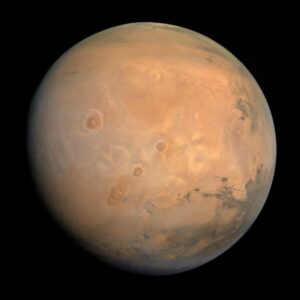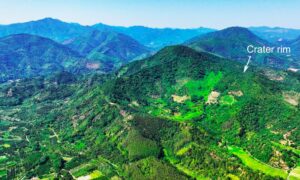Earth’s rotation has been slowing over time, but not uniformly. Instead, it decelerates in a staircase pattern. At some points, it slows a lot within a short time. Then its pace remains almost constant.
Scientists from Ireland, France, China, and Germany looked at eight geological snapshots over time to get a picture of Earth’s rotational history between 650 million and 240 million years ago. Sediments and rocks in the ocean leave a record of rotation. These rocks indicate how strong the tide was at different times. Models can then reveal the past tidal forces between Earth and the Moon, and how quickly the early Earth spun on its axis.
The study showed that during those 400 million years, the distance between Earth and the Moon increased by 20,000km. This lengthened our days by 2.2 hours, from 22 hours to 24 hours. It’s been fairly stable since then. The rotation is still slowing, but to a much smaller degree.
Our planet gradually spins more slowly because of something called tidal dissipation. Gravitational forces between the Moon and Earth create huge amounts of energy on Earth, visible as ocean tides. As the Moon gets farther away from Earth, its pull diminishes, our rotation slows, and the day lengthens.
Twice, Earth’s rotation slowed dramatically
Scientists have always assumed that the day lengthened steadily. Instead, Earth’s rotation slowed at two distinct points: between 650 to 500 million years ago and between 350 and 280 million years ago. During these two epochs, which coincide with significant points in our planet’s history, Earth’s rotational deceleration was at its highest.
The first deceleration period occurred at roughly the same time as the Neoproterozoic Oxygenation Event and the Cambrian explosion, when millions of new animals suddenly burst onto the evolutionary scene. The second happened around the same time as the Paleozoic Oxygenation Event, another point of huge biodiversification.
In between these times, from 500 to 350 million years ago, the continents drifted significantly toward the South Pole. This caused a deep freeze that eventually killed 90% of marine species and 70% of land species.
The fact that these huge environmental changes coincided with Earth’s deceleration suggests that the two are linked. During the Cambrian explosion, for example, the additional few hours of sunlight meant more photosynthesis on Earth. This increased the amount of oxygen in our atmosphere and made Earth more suitable for life. Changes to the length of day also increase solar energy and therefore warmth, improving the climate in general.
In the period since Earth’s 22-hour day, our days have been getting imperceptibly longer. Over time, even these comparatively minor changes will add up.






